Sigma introduced the world’s first full-frame, mirrorless, f/1.8 lens: the 28-45mm f/1.8 Art. But if no one has ever made a lens like this before, do we even need it? Let’s look at the facts with this rather odd entry and see if it’s a hidden gem or a mad science experiment.
The Sigma Art lens series has a rather illustrious history, delivering excellent image quality and rugged construction at a price that most could afford. This isn’t the first time Sigma has made an f/1.8 zoom lens either. The 18-35mm and 50-100mm are both f/1.8 zooms but they are designed for the smaller APS-C sized sensors. It’s not quite fair to compare these lenses simply by the metric of an f/1.8 aperture as a result. Sigma also released a 24-35mm f/2 lens which comes very close, however, the fact that we now have the option for a full-frame f/1.8 lens is quite an achievement. Does that extra light come with some compromises though?
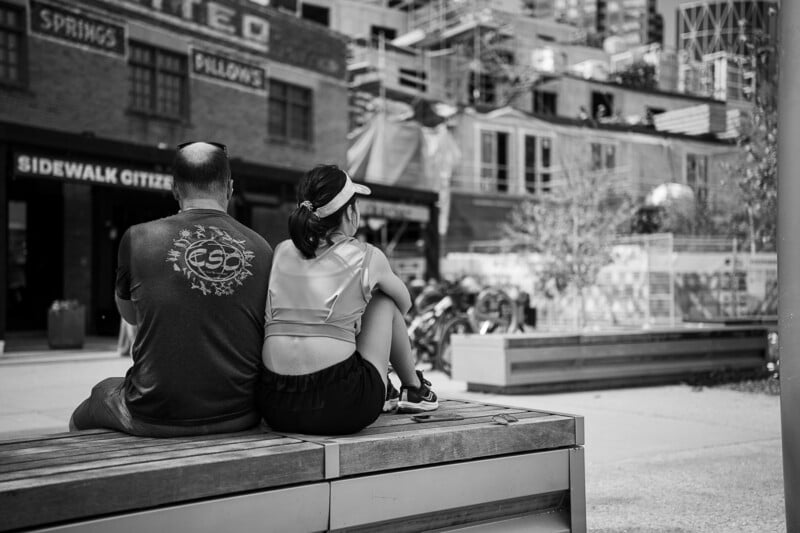
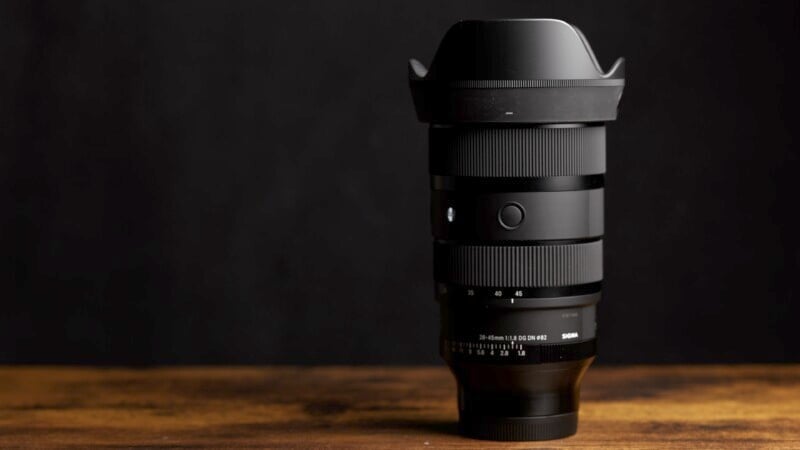
Sigma 28-45mm f/1.8 DG DN Art: How the Lens Handles
Where no compromise has been made is in the excellent build quality of the new 28-45mm. Art series lenses have always been made to a high standard and the 28-45mm carries this tradition forward with a solid metal chassis and full weather sealing. This, coupled with the fast f/1.8 aperture, comes at the cost of weight and bulk. The unfortunate trade-off is the rather heavy 33.5 ounces (950 grams) heft and rather large lens dimensions. At the front is a large 82mm filter thread and button-release hood and the 28-45mm is significantly heavier than a trio of similar apertured prime lenses and takes up about as much space. We do get a lot of nice features on this lens though, with custom buttons, smooth focus and zoom rings, and a classic aperture ring with smooth or click-stop operation.
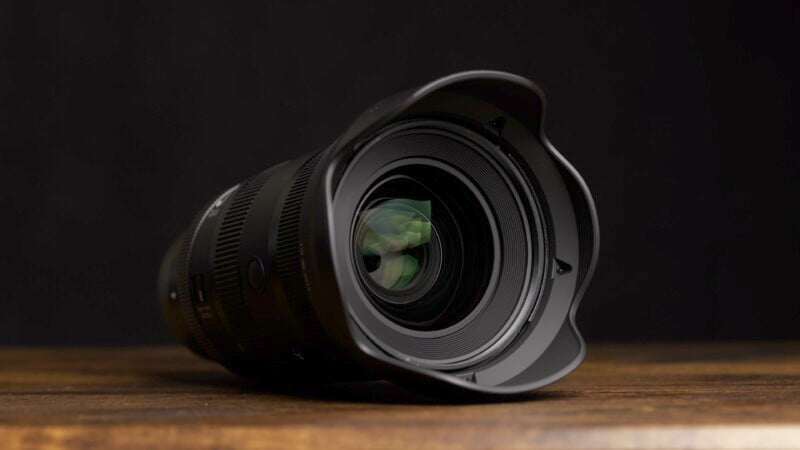
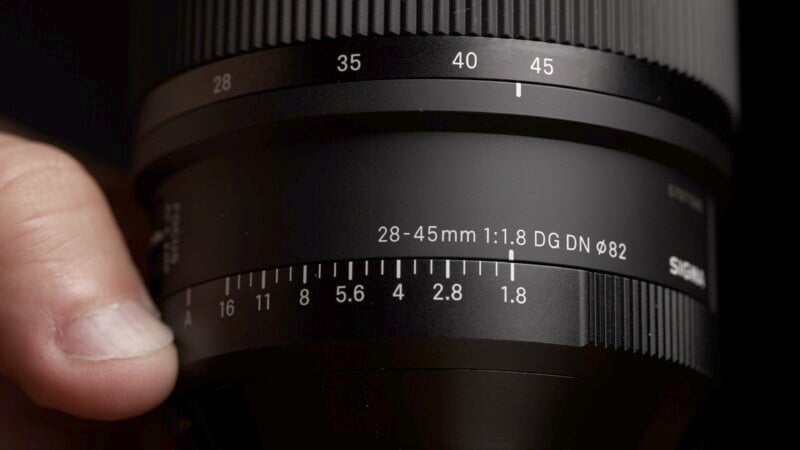
It has a manual focus switch but what it doesn’t have is a way to mechanically decouple the manual focus to avoid accidental adjustments. This is a nice option to have for astrophotography or studio setups when you simply want the focus to stay put no matter what. There is also no built-in image stabilization at all so you’ll be relying on in-camera sensor stabilization.
When it comes to autofocus performance though, I have zero complaints. The linear motors drive the lens elements very quickly and focusing from near to far is rapid.

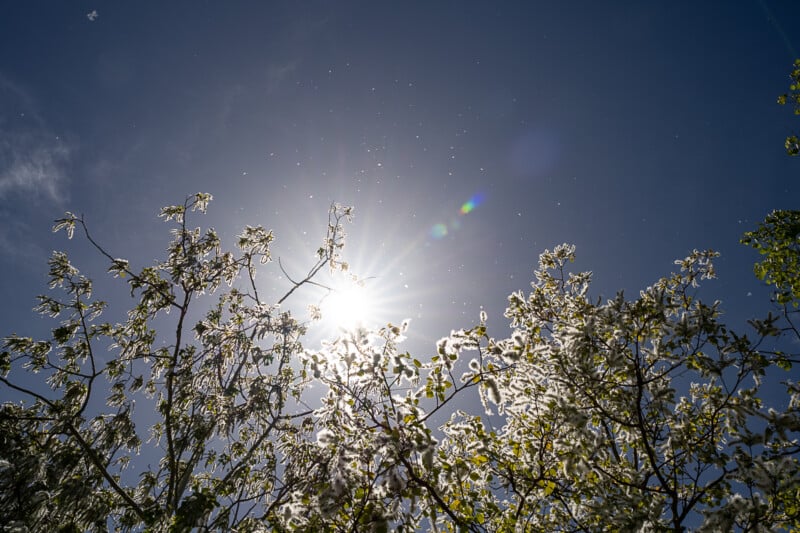
Sigma 28-45mm f/1.8 DG DN Art : How the Lens Shoots
One of the first things I tested for was LoCA or longitudinal chromatic aberration. If a lens performs poorly here you’ll get color shifts in the out-of-focus areas of your image. This is very hard to remove afterwards but happily, the Sigma 28-45mm exhibited almost none to worry about.
Sharpness is key and this is where I was skeptical of the performance. I ended up being surprised with how well the lens did on our test charts but there are some issues. Center sharpness at 28mm showed good detail even at f/1.8 but there is a lack of overall contrast. Steeping the lens down helps correct for this and gives good sharpness and contrast. The corners are correcting for some lens distortion for sure, and this can cause blurriness to the image. At f/1.8, the corners are soft, and stopping down to around f/4 helps out in a big way to correct for this.
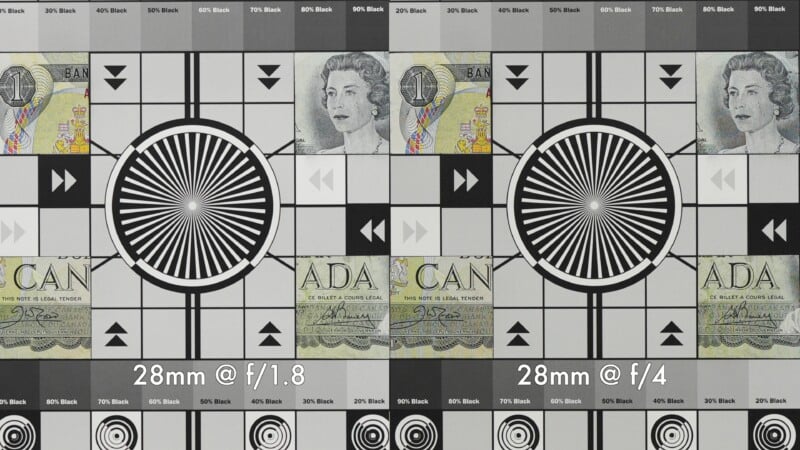
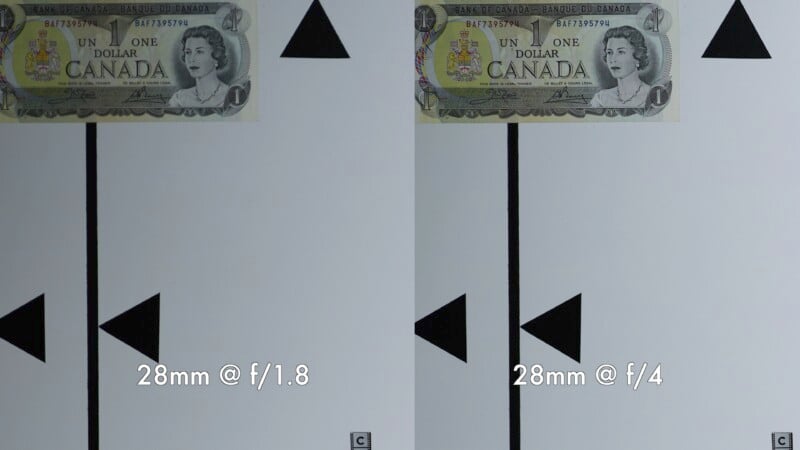
At 45mm the lens is slightly more consistent but the center of the image at f/1.8 does still lack contrast. Corners are better, though, even wide-open and the whole image improves with a little tightening of the aperture. The new Sigma lens is absolutely usable at f/1.8 which is a good thing; that is the main reason for this lens to exist. However, sharpness does benefit from an even slightly tighter aperture setting and I would do this when I could afford to.


Now, a 28-45mm zoom range doesn’t exactly cover a huge amount of lenses but one thing the Sigma can do is the occasional close-up picture. At the 45mm mark, the lens gives about 12 inches of distance from the sensor plane and about 1:4 life-size reproduction. More importantly, it is also sharp up close and becomes a handy walk-around macro lens for more casual work.
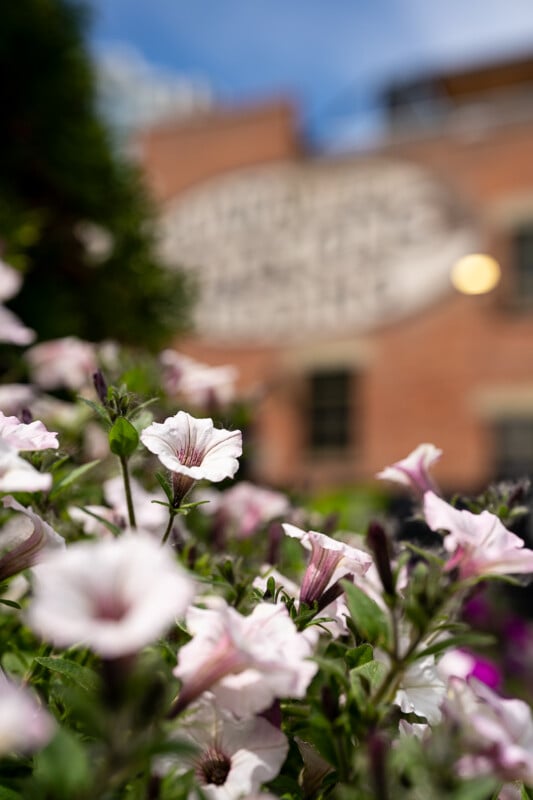
Flare is also well-controlled with very little loss of contrast even towards direct sunlight. There is basically no ghosting when shooting wider apertures and only a small amount when stopped down. You might be happy to know that this lens delivers decent sunstars — I know I was. The sunstars can get a little blurry looking but the stars themselves have long points and lots of them. The overall look is fairly dramatic and for any city or landscape shooters, this is a good result.
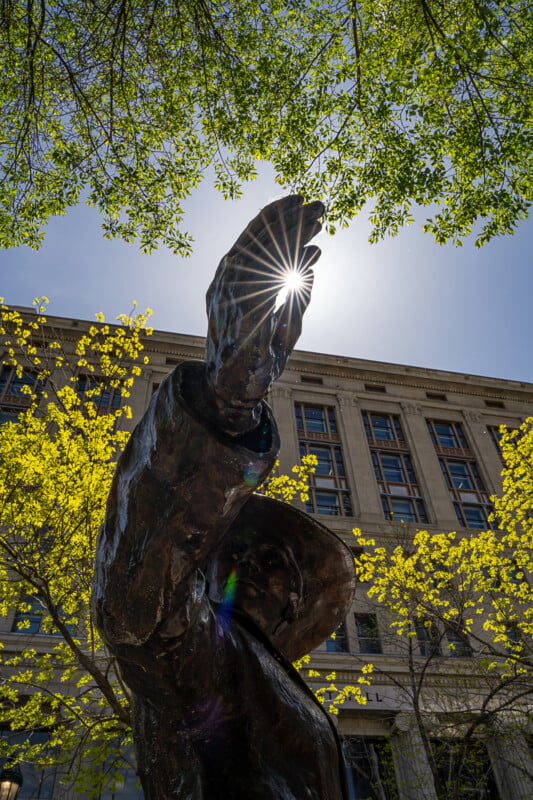
Bokeh is very important on an f/1.8 lens because shallow depth-of-field is rather easy to achieve. The specular highlights at f/1.8 show a very smooth and clean bokeh with a somewhat strong cat’s eye effect. Stopped down, the highlights become pleasant and round with no major onion-ring look or strong haloes. More importantly, this gives the transitions throughout the focus range a very smooth and natural look which means clean backgrounds and no distractions.

Sigma 28-45mm f/1.8 DG DN Art: Small Zoom Range But Big Versatility
What the Sigma 28-45mm lacks in zoom range it seems to make up in versatility and the results are sharp and optically well-corrected. The 28-45mm lets in lots of light and can handle the occasional macro shot, too. This also has lots of potential as a video lens with its internal zoom which remains balanced as you shift it; perfect for gimbal work.
There is some lens breathing present but it’s more manageable at 45mm than it is at 28mm. I could see this lens being very useful for a video event shooter who needs quick zooming and a wide aperture to capture the action indoors. In the photo world, I feel like landscape shooters will want something with a wider zoom range going to at least 24mm or more. Street shooters may like the convenience of a zoom but I feel that most people would be better served with some compact prime lenses instead. Regardless of whether this lens is right for you or not, there is no faulting the reasonable $1,349 price. For the performance and the specs, I expected it to be a lot more expensive.
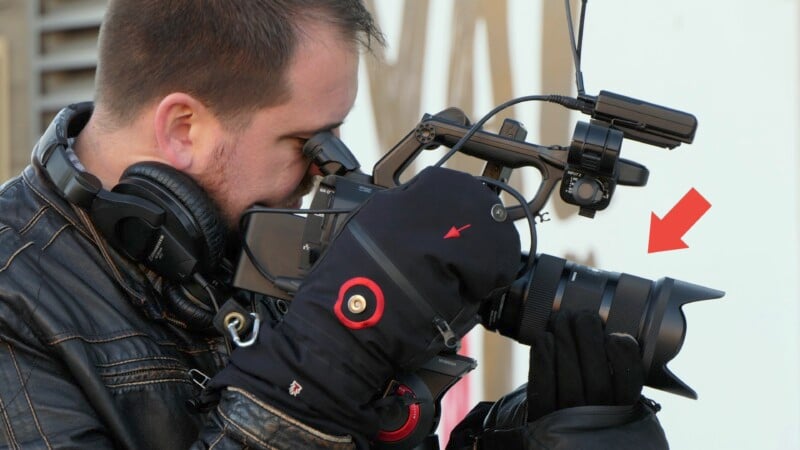
Are There Alternatives?
The Sigma Art 24-35mm f/2 lens would probably be better suited to a landscape photographer and the wider angle coverage is more suited to different genres of photography. Other than that, though, Sigma has once again made a unique optic with no direct competitor.
Should You Buy It?
Maybe. Videographers might get a lot of value out of this lens, as well as any concert or event photographers who need maximum light. It’s versatile enough as a lens but also easily replaced with affordable primes or a general-purpose pro lens giving up a little light.
